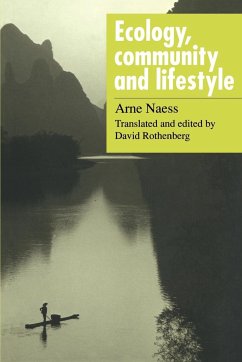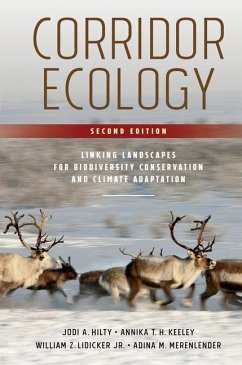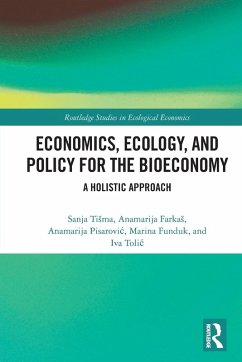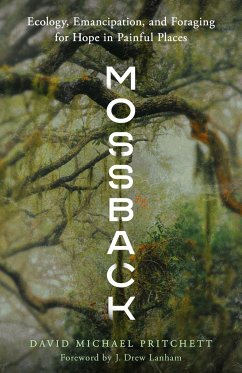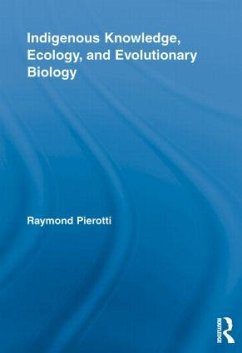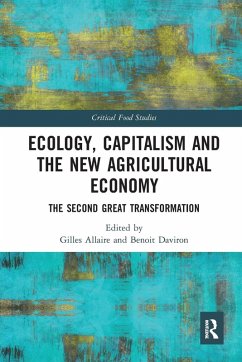
Elements of Ecology, Global Edition

PAYBACK Punkte
61 °P sammeln!
Elements of Ecology, Ninth Edition continues to explain ecological processes clearly and concisely, with a greater emphasis on the relevance of ecology to everyday life and the human impact on ecosystems. This dramatically revised edition discusses issues of human ecology throughout the text and provides a greater variety of opportunities for students to learn, practice, and develop quantitative and analytical skills. Current research examples and other content updates are supported by more than 200 redesigned, full-color illustrations, graphs, and tables.
With Elements of Ecology, 9/e you can:
Help Students Interpret and Analyze Ecology Data: New and expanded in-text instruction and practice is provided in Interpreting Ecological Data figure questions, in-depth Quantifying Ecology boxes, and Analyzing Ecological Data case studies. Many are expanded and assignable in MasteringBiology.
Keep Your Course Current and Relevant while also keeping students focused on learning essential concepts: With updated “Field Studies” and research references throughout, the Ninth Edition also provides a streamlined discussion on metapopulations and integrates human ecology concepts into all chapters.
MasteringBiology® is not included. Students, if MasteringBiology is a recommended/mandatory component of the course, please ask your instructor for the correct ISBN. MasteringBiology should only be purchased when required by an instructor. Instructors, contact your Pearson representative for more information.
MasteringBiology is an online homework, tutorial, and assessment product designed to personalize learning and improve results. With a wide range of interactive, engaging, and assignable activities, students are encouraged to actively learn and retain tough course concepts.
Features + Benefits
This title is a Pearson Global Edition. The Editorial team at Pearson has worked closely with educators around the world to include content which is especially relevant to students outside the United States.
Help Students Interpret and Analyze Data
Expanded Interpreting Ecological Data figure questions challenge students to pull information from graphs and data tables and to consider different outcomes.
Expanded Quantifying Ecology boxes now appear in every chapter and delve into selected chapter topics in greater detail to explain the related interpretation of ecological data, quantitative methods, and mathematical models.
Further Readings at the end of each chapter emphasize how the text is based on real scientific studies. These Further Readings are annotated to explain their relevance to the student/instructor.
Keep Your Course Current and Relevant while also keeping students focused on learning essential concepts.
NEW! Human Ecology discussions are now integrated throughout each chapter in an “Ecological Issues and Applications” section. This material, which was previously found Chapters 28, and 29, has been streamlined and is now presented in context with basic ecology concepts to emphasize the relevance of ecology to understanding and addressing environmental concerns. Each section is followed by a set of critical thinking questions.
NEW! Chapter 27 Global Climate Change has been completely updated and incorporates current data and examples.
NEW! Streamlined discussions on metapopulations provide a more accessible introduction to these topics by moving this material from a separate chapter (12) to the chapters on population structure (Chapter 8) and landscape ecology (Chapter 20),
NEW! A dramatically-revised art program features more than 200 redesigned, full-color illustrations, graphs and tables.
UPDATED! Field Studies discuss ecological research performed by young up-and-coming scientists, and challenge students to interpret the results of the featured research.
MasteringBiology® is not included. Students, if MasteringBiology is a recommended/mandatory component of the course, please ask your instructor for the correct ISBN. MasteringBiology should only be purchased when required by an instructor. Instructors, contact your Pearson representative for more information.
Personalize Learning with MasteringBiology®
New! MasteringBiology is an online homework, tutorial, and assessment product that improves results by helping students quickly master concepts. Students benefit from self-paced tutorials that feature immediate wrong-answer feedback and hints that emulate the office-hour experience to help keep students on track. With a wide range of interactive, engaging, and assignable activities, students are encouraged to actively learn and retain tough course concepts. Specific features include:
MasteringBiology assignment options reinforce basic ecology concepts presented in each chapter for students to learn and practice outside of class.
A wide variety of assignable and automatically-graded Coaching Activities , including GraphtIt, QuantifyIt, and InvestigateIt activities, allow students to practice and review key concepts and essential skills.
MapMaster™ Interactive map activities act as a mini-GIS tool, allowing students to layer thematic maps for analyzing patterns and data at regional and global scales. Multiple-choice and short-answer assessment questions are organized around the themes of ecosystems, physical environments, and populations.
Reading Questions keep students on track and allow them to test their understanding of ecology concepts.
MasteringBiology makes it easy for instructors to assign relevant applications and current topics as homework outside of class.
Current Events activities are regularly updated and require students to demonstrate their understanding of New York Times articles and ABC News video clips.
InvestigateIt Activities allow students to further explore and analyze the Field Study examples provided in the text.
QuantifyIt and GraphIt coaching activities challenge students to practice basic data interpretation and analysis skills.
Chapter 1: The Nature of Ecology
Chapter 2: Climate
Chapter 3: The Aquatic Environment
Chapter 4: The Terrestrial Environment
Chapter 5: Adaptation and Natural Selection
Chapter 6: Plant Adaptations to the Environment
Chapter 7: Animal Adaptations to the Environment
Chapter 8: Properties of Populations
Chapter 9: Population Growth
Chapter 10: Life History
Chapter 11: Intraspecific Population Regulation
Chapter 12: Species Interactions, Population Dynamics, and Natural Selection
Chapter 13: Interspecific Competition
Chapter 14: Predation
Chapter 15: Parasitism and Mutualism
Chapter 16: Community Structure
Chapter 17: Factors Influencing the Structure of Communities
Chapter 18: Community Dynamics
Chapter 19: Landscape Dynamics
Chapter 20: Ecosystem Energetics
Chapter 21: Decomposition and Nutrient Cycling
Chapter 22: Biogeochemical Cycles
Chapter 23: Terrestrial Ecosystems
Chapter 24: Aquatic Ecosystems
Chapter 25: Coastal and Wetland Ecosystems
Chapter 26: Large-Scale Patterns of Biological Diversity
Chapter 27: Global Climate Change
With Elements of Ecology, 9/e you can:
Help Students Interpret and Analyze Ecology Data: New and expanded in-text instruction and practice is provided in Interpreting Ecological Data figure questions, in-depth Quantifying Ecology boxes, and Analyzing Ecological Data case studies. Many are expanded and assignable in MasteringBiology.
Keep Your Course Current and Relevant while also keeping students focused on learning essential concepts: With updated “Field Studies” and research references throughout, the Ninth Edition also provides a streamlined discussion on metapopulations and integrates human ecology concepts into all chapters.
MasteringBiology® is not included. Students, if MasteringBiology is a recommended/mandatory component of the course, please ask your instructor for the correct ISBN. MasteringBiology should only be purchased when required by an instructor. Instructors, contact your Pearson representative for more information.
MasteringBiology is an online homework, tutorial, and assessment product designed to personalize learning and improve results. With a wide range of interactive, engaging, and assignable activities, students are encouraged to actively learn and retain tough course concepts.
Features + Benefits
This title is a Pearson Global Edition. The Editorial team at Pearson has worked closely with educators around the world to include content which is especially relevant to students outside the United States.
Help Students Interpret and Analyze Data
Expanded Interpreting Ecological Data figure questions challenge students to pull information from graphs and data tables and to consider different outcomes.
Expanded Quantifying Ecology boxes now appear in every chapter and delve into selected chapter topics in greater detail to explain the related interpretation of ecological data, quantitative methods, and mathematical models.
Further Readings at the end of each chapter emphasize how the text is based on real scientific studies. These Further Readings are annotated to explain their relevance to the student/instructor.
Keep Your Course Current and Relevant while also keeping students focused on learning essential concepts.
NEW! Human Ecology discussions are now integrated throughout each chapter in an “Ecological Issues and Applications” section. This material, which was previously found Chapters 28, and 29, has been streamlined and is now presented in context with basic ecology concepts to emphasize the relevance of ecology to understanding and addressing environmental concerns. Each section is followed by a set of critical thinking questions.
NEW! Chapter 27 Global Climate Change has been completely updated and incorporates current data and examples.
NEW! Streamlined discussions on metapopulations provide a more accessible introduction to these topics by moving this material from a separate chapter (12) to the chapters on population structure (Chapter 8) and landscape ecology (Chapter 20),
NEW! A dramatically-revised art program features more than 200 redesigned, full-color illustrations, graphs and tables.
UPDATED! Field Studies discuss ecological research performed by young up-and-coming scientists, and challenge students to interpret the results of the featured research.
MasteringBiology® is not included. Students, if MasteringBiology is a recommended/mandatory component of the course, please ask your instructor for the correct ISBN. MasteringBiology should only be purchased when required by an instructor. Instructors, contact your Pearson representative for more information.
Personalize Learning with MasteringBiology®
New! MasteringBiology is an online homework, tutorial, and assessment product that improves results by helping students quickly master concepts. Students benefit from self-paced tutorials that feature immediate wrong-answer feedback and hints that emulate the office-hour experience to help keep students on track. With a wide range of interactive, engaging, and assignable activities, students are encouraged to actively learn and retain tough course concepts. Specific features include:
MasteringBiology assignment options reinforce basic ecology concepts presented in each chapter for students to learn and practice outside of class.
A wide variety of assignable and automatically-graded Coaching Activities , including GraphtIt, QuantifyIt, and InvestigateIt activities, allow students to practice and review key concepts and essential skills.
MapMaster™ Interactive map activities act as a mini-GIS tool, allowing students to layer thematic maps for analyzing patterns and data at regional and global scales. Multiple-choice and short-answer assessment questions are organized around the themes of ecosystems, physical environments, and populations.
Reading Questions keep students on track and allow them to test their understanding of ecology concepts.
MasteringBiology makes it easy for instructors to assign relevant applications and current topics as homework outside of class.
Current Events activities are regularly updated and require students to demonstrate their understanding of New York Times articles and ABC News video clips.
InvestigateIt Activities allow students to further explore and analyze the Field Study examples provided in the text.
QuantifyIt and GraphIt coaching activities challenge students to practice basic data interpretation and analysis skills.
Chapter 1: The Nature of Ecology
Chapter 2: Climate
Chapter 3: The Aquatic Environment
Chapter 4: The Terrestrial Environment
Chapter 5: Adaptation and Natural Selection
Chapter 6: Plant Adaptations to the Environment
Chapter 7: Animal Adaptations to the Environment
Chapter 8: Properties of Populations
Chapter 9: Population Growth
Chapter 10: Life History
Chapter 11: Intraspecific Population Regulation
Chapter 12: Species Interactions, Population Dynamics, and Natural Selection
Chapter 13: Interspecific Competition
Chapter 14: Predation
Chapter 15: Parasitism and Mutualism
Chapter 16: Community Structure
Chapter 17: Factors Influencing the Structure of Communities
Chapter 18: Community Dynamics
Chapter 19: Landscape Dynamics
Chapter 20: Ecosystem Energetics
Chapter 21: Decomposition and Nutrient Cycling
Chapter 22: Biogeochemical Cycles
Chapter 23: Terrestrial Ecosystems
Chapter 24: Aquatic Ecosystems
Chapter 25: Coastal and Wetland Ecosystems
Chapter 26: Large-Scale Patterns of Biological Diversity
Chapter 27: Global Climate Change
Elements of Ecology, Ninth Edition continues to explain ecological processes clearly and concisely, with a greater emphasis on the relevance of ecology to everyday life and the human impact on ecosystems. This dramatically revised edition discusses issues of human ecology throughout the text and provides a greater variety of opportunities for students to learn, practice, and develop quantitative and analytical skills. Current research examples and other content updates are supported by more than 200 redesigned, full-color illustrations, graphs, and tables. With Elements of Ecology, 9/e you can: * Help Students Interpret and Analyze Ecology Data: New and expanded in-text instruction and practice is provided in Interpreting Ecological Data figure questions, in-depth Quantifying Ecology boxes, and Analyzing Ecological Data case studies. Many are expanded and assignable in MasteringBiology. * Keep Your Course Current and Relevant while also keeping students focused on learning essential concepts: With updated ?Field Studies? and research references throughout, the Ninth Edition also provides a streamlined discussion on metapopulations and integrates human ecology concepts into all chapters. MasteringBiology® is not included. Students, if MasteringBiology is a recommended/mandatory component of the course, please ask your instructor for the correct ISBN. MasteringBiology should only be purchased when required by an instructor. Instructors, contact your Pearson representative for more information. MasteringBiology is an online homework, tutorial, and assessment product designed to personalize learning and improve results. With a wide range of interactive, engaging, and assignable activities, students are encouraged to actively learn and retain tough course concepts
Dieser Artikel kann nur an eine deutsche Lieferadresse ausgeliefert werden.




